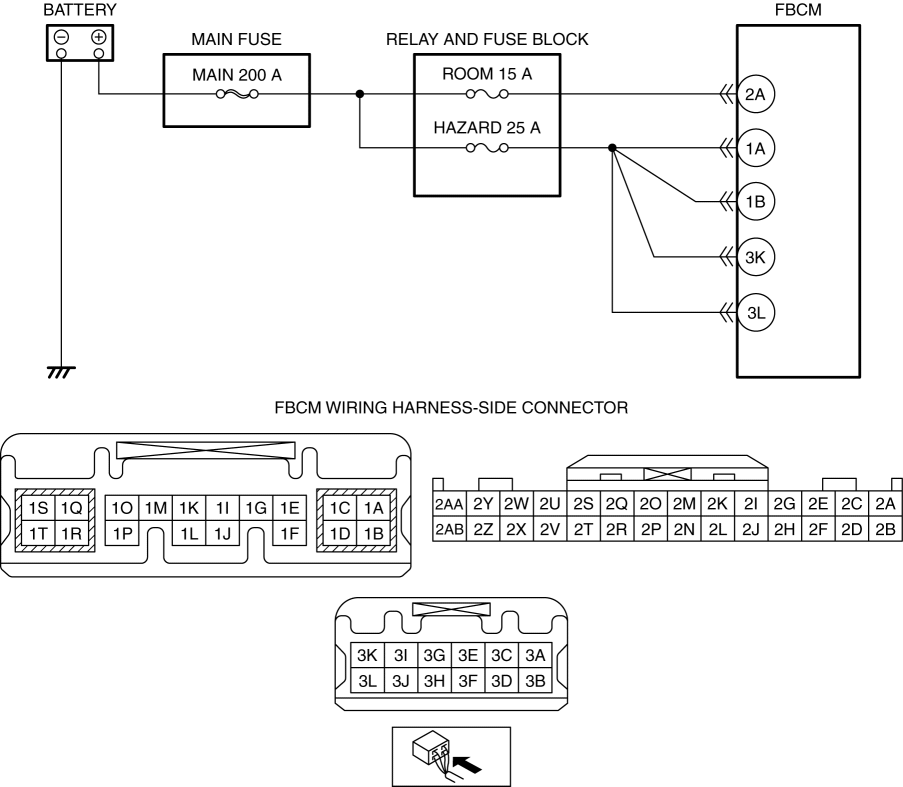Description
Front body control module (FBCM) power supply voltage mismatch
Detection condition
Front body control module (FBCM) terminal 1A, 1B, 3K, and 3L voltages of 2 V or more lower than the voltage of terminal 2A are detected for 5 s or more with the ignition switched ON (engine off or on).
Fail-safe function
Not applicable
Possible cause
Front body control module (FBCM) connector or terminal malfunction
Front body control module (FBCM) power supply circuit malfunction
Short to ground in the wiring harness between the following:
MAIN 200 A fuse—Front body control module (FBCM) terminal 2A
MAIN 200 A fuse—Front body control module (FBCM) terminal 1A
MAIN 200 A fuse—Front body control module (FBCM) terminal 1B
MAIN 200 A fuse—Front body control module (FBCM) terminal 3K
MAIN 200 A fuse—Front body control module (FBCM) terminal 3L
ROOM 15 A fuse malfunction
HAZARD 25 A fuse malfunction
MAIN 200 A fuse malfunction
Open circuit in wiring harness between the following terminals:
Battery positive terminal—Front body control module (FBCM) terminal 2A
Battery positive terminal—Front body control module (FBCM) terminal 1A
Battery positive terminal—Front body control module (FBCM) terminal 1B
Battery positive terminal—Front body control module (FBCM) terminal 3K
Battery positive terminal—Front body control module (FBCM) terminal 3L
Front body control module (FBCM) malfunction
